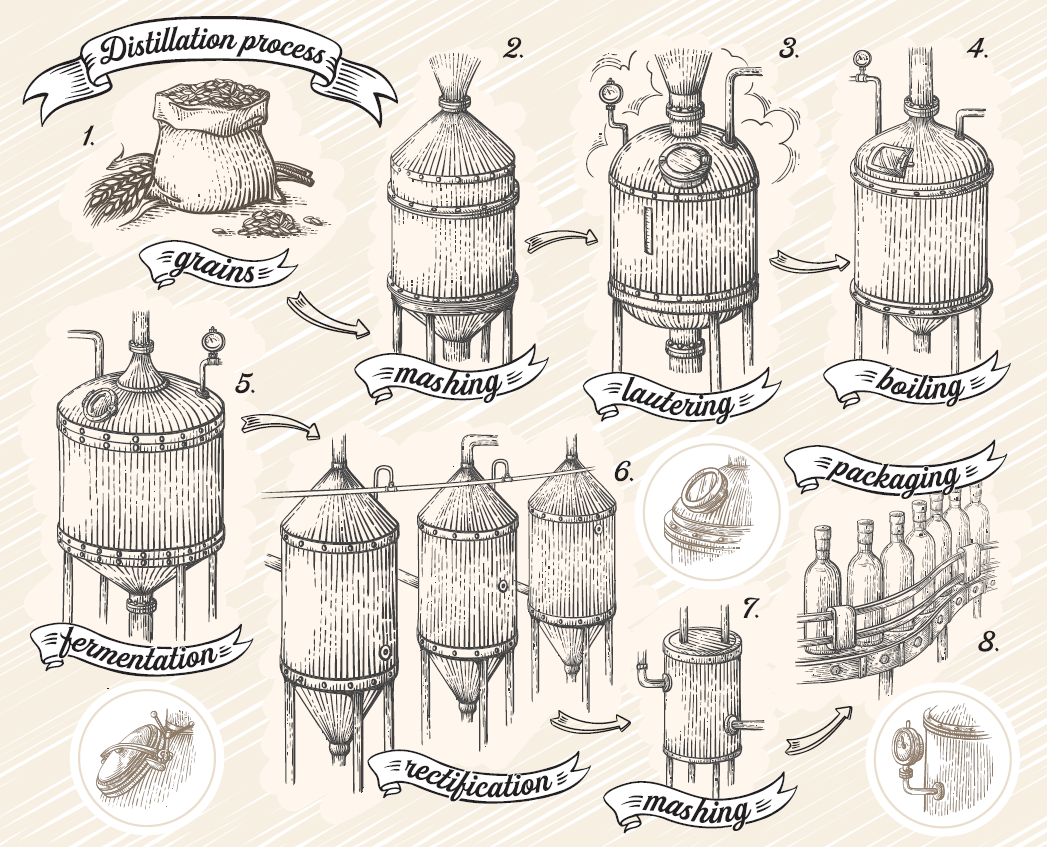Our Industry
It is believed that the first alcoholic beverage created by humans dates to the Neolithic period (c. 10,000BC) based on the discovery of late Stone Age jugs for storing intentionally fermented drinks.
Beers, wine and spirits are a drink that contains ethanol, a type of alcohol produced by fermentation of grains, fruits, or other sources of sugar. The consumption of alcohol plays an important social role in Australia where it is often enjoyed as part of our way of life – toasting a wedding, watching sport, over a meal, or as a special gift.
Discover where our products are made.
How beer, wine and spirits get made
All beer, wine and spirits contain ethyl alcohol or ethanol.
Beer and wine are fermented beverages, while spirits are a distilled beverage.
Beer, Wine, Cider & Mead
These are produced through the process of fermentation, which refers to a process by which yeast converts sugar to ethanol.
And depending on what you are making, it all hinges on the starting ingredient.
Beer is produced by fermenting grain. Wine is made from grapes, cider from apples or pears. Mead is produced by fermenting honey.
There is a limit to the alcoholic content you can make using this process as yeast cannot survive in certain concentration of alcohol. Once you get to around 16% Alcohol By Volume (ABC), the yeast will die and fermentation process will end.
Distilled Beverages
In order to produce a higher concentration of ethanol, a distillation process is used. Distillation occurs when water is removed from a mixture of ethanol and water.
There is a difference in the boiling points of water and alcohol, which allows a distiller to separate the two liquids from each other. Having a lower boiling point, ethanol will more easily evaporate, with the steam then cooled back into a liquid with a higher concentration of ethanol.
To give flavour and complexity, the distilled beverage is usually aged in a variety of casks or infused with botanicals and flavours for a period of time before drinking.
All distilled spirits start from something. Brandy is made by distilling wine. Whiskey is made by distilling a specific type of beer. Rum is made by distilling molasses left over when sugar is extracted from sugarcane. Vodka is made by distilling fermented potato juice or grains like wheat or rye. Tequila is made by distilling fermented agave (a cactus type plant).
Once a drink has been made, it has to find its way to consumers and with our large land mass and a relatively small population, that requires world class logistics and supply chains. Leading producers, wholesalers, and retailers have made significant capital investments including automated warehouses, sophisticated robotics, AI and refrigerated containers to ensure the finished beer, wine, spirit or cider taste the way their crafters intended.
Australia’s pubs, clubs, bars, restaurants, cafes, and retail stores are some of the best in the world, often taking out top honours in internationally recognised competitions. Our tourism sector too has an integral relationship with the drinks industry. This is because the core of a successful retail and hospitality environment is creating an emotional bond between the space and the consumer and whether it is visiting a wine region, celebrating at a wedding, marking a birthday or simply sharing a glass over a movie at home., there is often an emotional bond to the drinking occasion.
The skills of the people who serve and help match the drink to the occasion is one of the reasons so many young Australians are drawn to a career in hospitality and retail, and eventually go on to run a business of their own – employing more Australians along the way.





